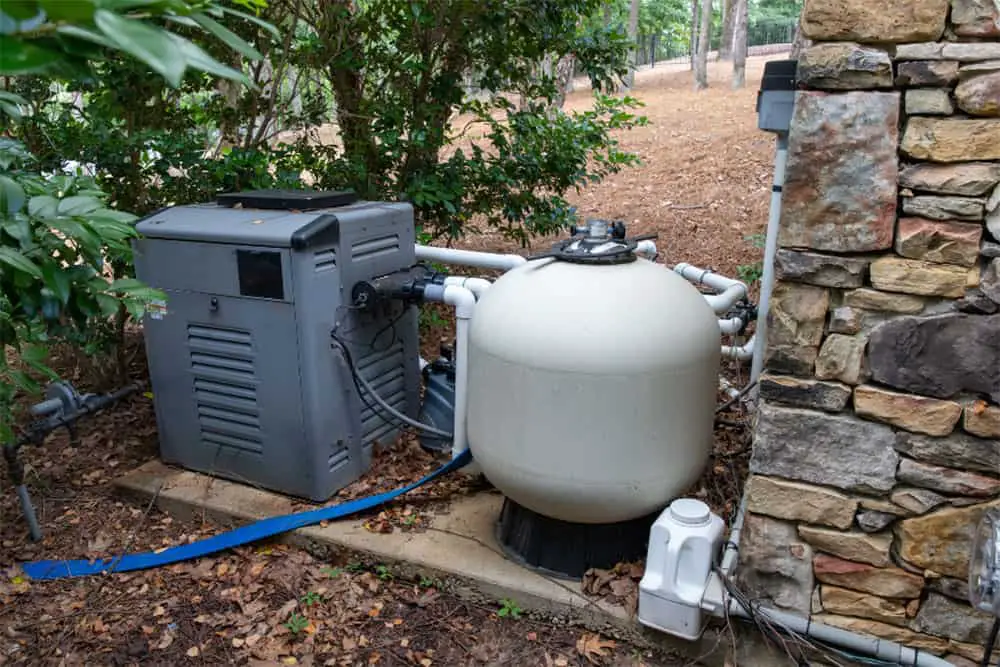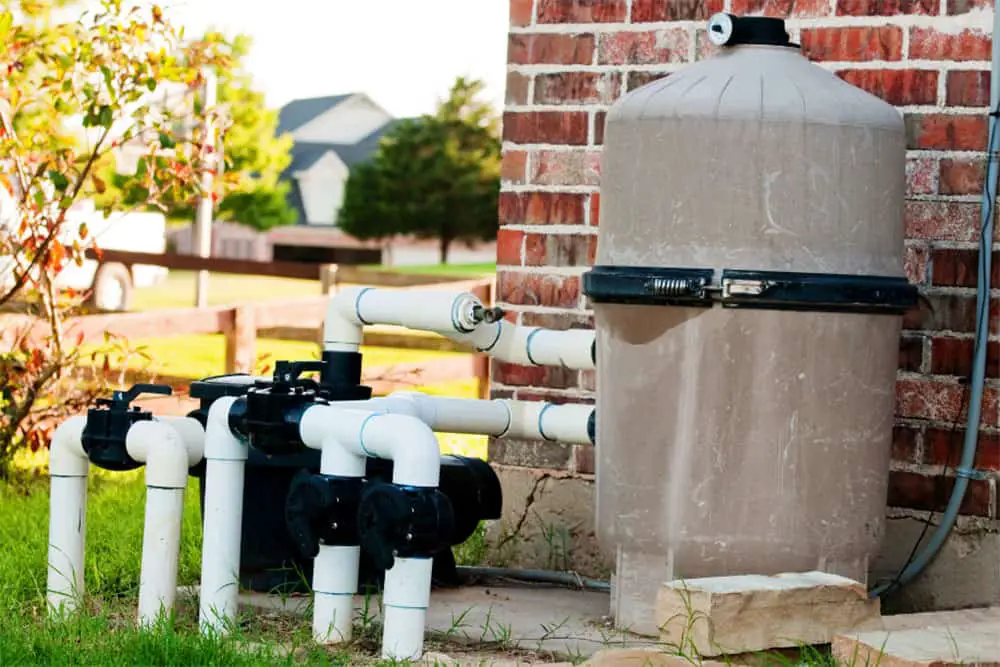Have you ever noticed that cats seem to prefer drinking from things like ponds and fountains more than their actual water bowls?
Well, contrary to popular belief, it’s not just because they enjoy being difficult; it’s because something in their DNA tells them that still water is stagnant water, and stagnant water is bad.

Whether we’re drinking it or swimming in it, the same is true for us, which is why a pool pump is an absolutely essential bit of gear.
In the absence of a pump, our pool water would develop a film over the surface, it would fill with bugs and debris, then finally, algae would take over, turning the clear water a swampy green.
Yep, there’s no doubt that there are some pretty dire consequences of a pumpless pool, but how exactly does one little device accomplish so much? Let’s find out!
Pool Pumps At A Glance - What Do They Do?
You can think of the pump as the heart of your pool. It circulates the water through the filtration system, leaving it crystal clear and prime for a dip — we salute you, pool pump!
Some are fitted with specialized filter media to enhance their cleaning abilities. The Intex 26645EG, for instance, has a sand filter. Others, like the Pentair SuperFlo, have variable speed motors, so you can control flow rate.
How Does A Pool Pump Work - Pump Components
To understand how a pool pump works, we first need to break it down into its discrete parts.
The Debris Basket
This basket is housed within the pump itself. It’s designed to catch large debris, taking some heat off the filtration system. All the larger contaminants such as leaves and twigs will end up here.
The Impeller
An impeller is essentially the opposite of a turbine. As you may already know, a turbine is used to extract energy from, and reduce the force of, water flow. Conversely, an impeller is used to increase the pressure of water.
Attached to the motor shaft, it starts spinning when you fire up the pump, which gets the water moving.
The Water Diffuser
The water diffuser is fitted around the impeller, manipulating the direction of the water as it enters then exits into the pump.
The Motor
Pool pumps use electrical motors. The motor’s job is to transform electrical energy into kinetic energy, or in other words, motion.
This is what sets the motor shaft off, putting the impeller to work moving the pool water.
Inside the motor is something called a stator winding, which essentially looks like a big, sciency hamster wheel. It produces a magnetic current with an alternating field.
The interaction between these two magnetic fields produces enough rotational force to spin the rotor winding, creating torque, and rotating the shaft — clever, huh?
The Bearing
The bearing of a pool pump does what bearings do in whatever mechanism they’re used in.
It’s designed to reduce friction between moving parts, preventing wear, and facilitating a smooth, quiet performance.
In this scenario, the bearing itself needs protection, due to its proximity to water, so it will be fitted with a waterproof enclosure.
will help to stave off corrosion, keeping our pumps running seamlessly for longer.
The Water Discharger
Water dischargers are exactly what they sound like. They send the water on its way to the filtration system for a deep clean before it’s circulated back into the pool.
Where Are Pool Pumps Installed?
Pump locations depend on the type of pool. Above ground pool pumps are designed to be placed below the pool waterline usually sitting on the ground near by. In ground pools pumps are situated above the waterline. Both pump locations can be far enough away so you don't hear pump noise. Pumps aren't loud but they are an electric motor so keep that in consideration. You can screen for the noise with fencing or plants.

As such, many choose to have them installed below ground.
The Pumping Process - The Water’s Journey
When you fire your pool pump up, the water’s journey begins at the main drain, which is a small to medium size grid located somewhere around the bottom of your pool.
It then passes through something known as a skimmer.
Much like the debris basket in the pump, the skimmer is designed to reduce the number of large pollutants in the water before it reaches the more stringent measures of the filter.
From the skimmer, your pool water heads downwards towards the pump itself. It reaches the impeller which is spinning on the motor shaft.
The impeller looks like a little water wheel you’d see outside a watermill, but the veins are forced apart ever so slightly.
As the paddles flip past the inlet-tube, they create negative pressure, forcing the water through the pump.
Once the basket has had its time to shine, picking up the larger debris that slipped through the gaps of the skimmer, the water makes its way through to the discharger.
The negative pressure imparted by the impeller creates a partial vacuum, allowing the water to travel upwards if necessary.
The water then hits the filtration system, where all the particulate contaminants are weeded out.
If you have a water heater installed, that’s the final stop before the water is finally pumped back through to your pool, clean as a whistle, ready to receive your finest cannonball.
Otherwise, the water will head directly to the pool from the filter.
Pool Pump Maintenance
Just like any piece of machinery, pool pumps require a spot of maintenance every now and again.
You’ll need to empty the debris basket semi-regularly and replace the basket cover gasket perhaps once a year.
As for the seals and gaskets of the motor shaft and water diffuser, unless you notice any leaking, you can wait between 2-3 years to replace them.
Summing Up
Pool pumps are essential to the quality of the water in our pools. They’re the force behind the water’s circulatory system.
Without them, the water would stagnate and become a hospitable environment for nasty bacteria just waiting to cling on to use during our morning dip.
Pumps are made of six fundamental components, a basket, an impeller, a water diffuser, a motor, a bearing, and a water discharger, and now you know how they work, you can take better care of yours.
Happy swimming!
